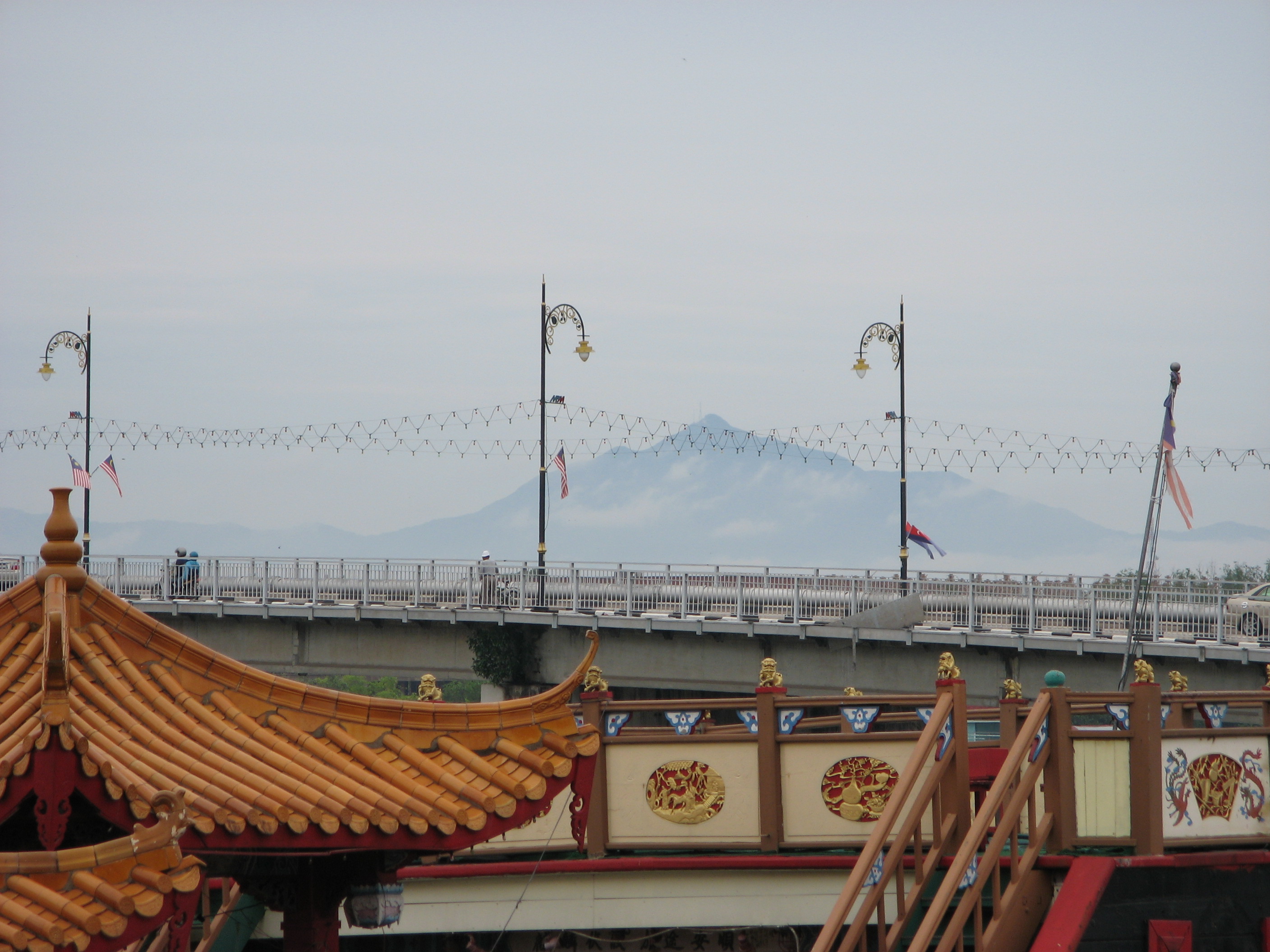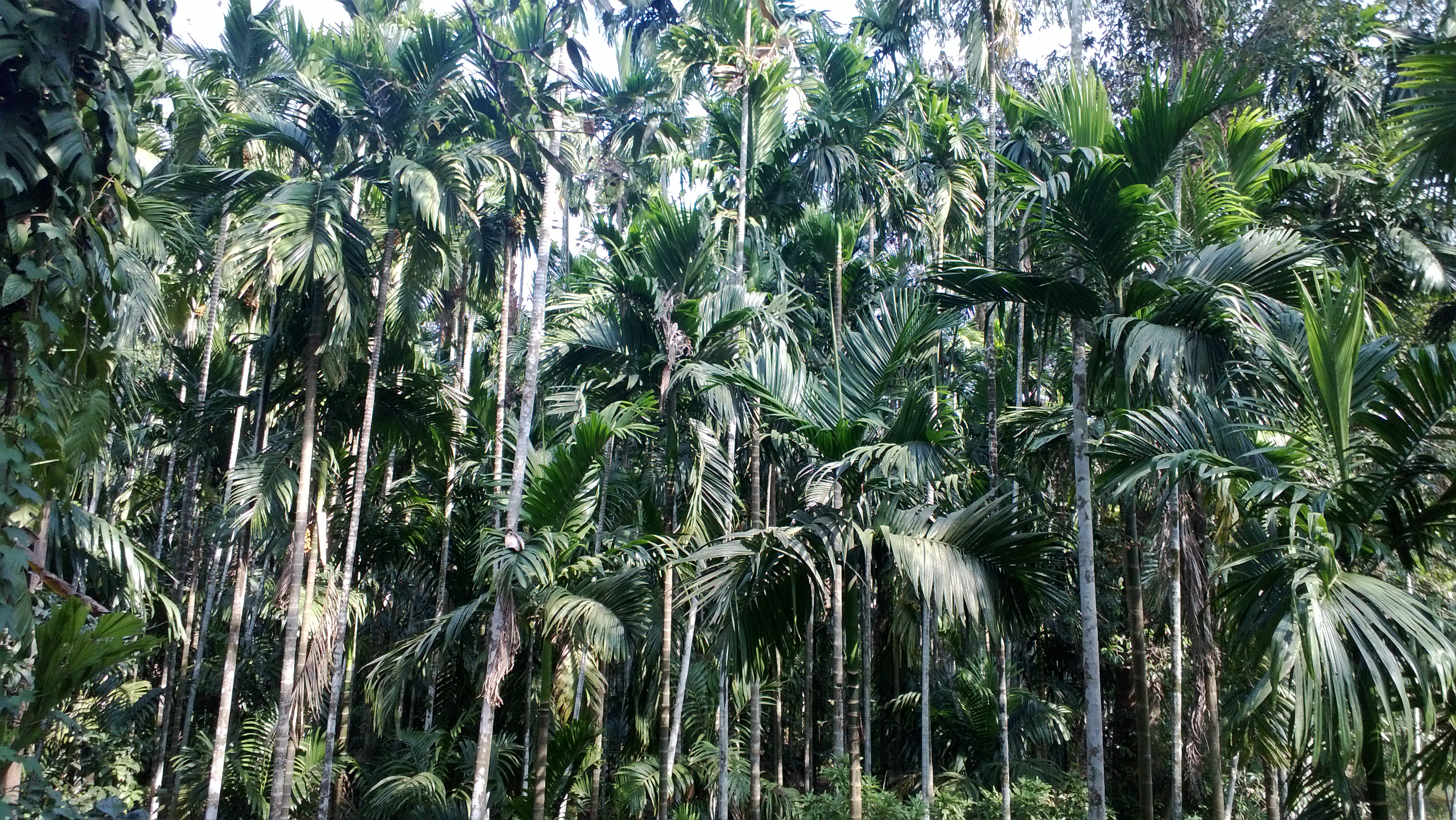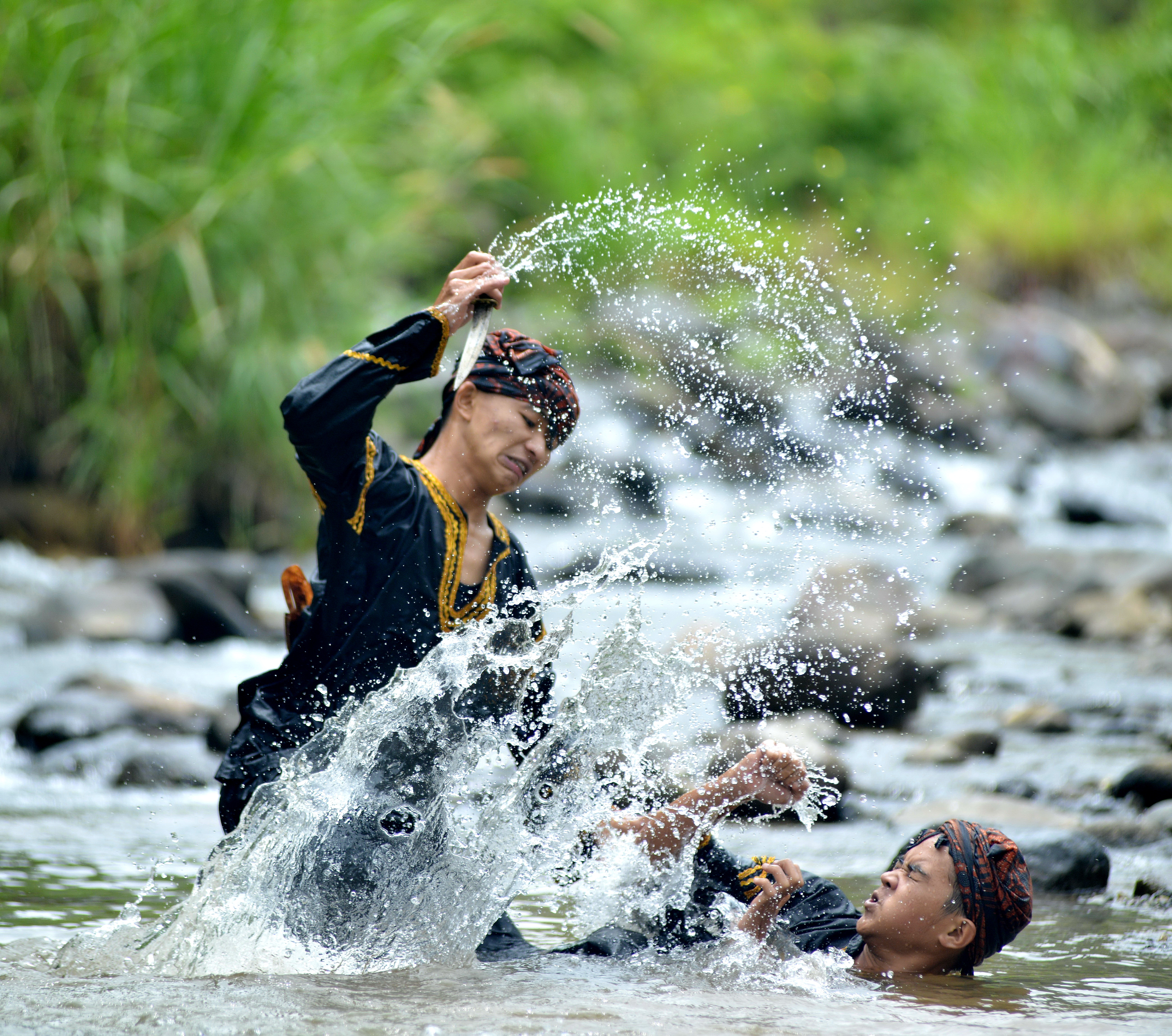|
Gunung Ledang
Mount Ledang ( ms, Gunung Ledang; historically also: Mount Ophir) is a mountain in the Gunung Ledang National Park located in Tangkak District, Johor, Malaysia. The summit is located next to the tripoint of Tangkak, Jasin and Tampin Districts, respectively located in the states of Johor, Malacca and Negeri Sembilan. Standing at 1,276 m (4,186 ft), it is the 64th highest mountain in Malaysia and the highest peak in Johor. Etymology There are a few popular opinions regarding the origin of the mountain's name. The attested version is Javanese during the period of the Majapahit empire named the mountain as ''Gunong Ledang'', which means 'lofty mountain', from Old Javanese word ''ledang'' meaning 'show-off'.Kamus Dewan 4th EditioRetrieved 2013-09-27 Another source (unattested) said that the Chinese seafarers plying the Straits of Malacca called it ''Kim Sua'' meaning the 'golden mountain', likely from the Hokkien or Teochew words: ''kim'' (金) meaning gold and ''suan ... [...More Info...] [...Related Items...] OR: [Wikipedia] [Google] [Baidu] |
Tangkak District
The Tangkak District is a district in western Johor, Malaysia, bordering Malacca to the west. The district also shares a 2 kilometre border with Negeri Sembilan to the northwest. The district capital and largest city is Tangkak Town. Geography The district covers Tangkak town, Tanjung Agas, Kesang, Sungai Mati, Serom, Sagil and Bukit Gambir.. History The district was previously an autonomous sub-district (daerah kecil) covering the north-western part of the Muar District, separated from Muar Town proper by the Muar River. A ceremony headed by the sultan on 9 June 2008 saw the official proclamation of that part becoming Johor's 10th district, then named Ledang District after the eponymous mountain located within its borders. The district was then renamed Tangkak District at the end of 2015 by a decree of Sultan Ibrahim Ismail to preserve the historical value of traditional name of places in the state. Administrative divisions Tangkak District is divided into: Mukim ... [...More Info...] [...Related Items...] OR: [Wikipedia] [Google] [Baidu] |
Straits Of Malacca
The Strait of Malacca is a narrow stretch of water, 500 mi (800 km) long and from 40 to 155 mi (65–250 km) wide, between the Malay Peninsula (Peninsular Malaysia) to the northeast and the Indonesian island of Sumatra to the southwest, connecting the Andaman Sea (Indian Ocean) and the South China Sea (Pacific Ocean). As the main shipping channel between the Indian and Pacific oceans, it is one of the most important shipping lanes in the world. It is named after the Malacca Sultanate that ruled over the strait between 1400 and 1511, the center of administration of which was located in the modern-day state of Malacca, Malaysia. Extent The International Hydrographic Organization define the limits of the Strait of Malacca as follows: History Early traders from Arabia, Africa, Persia, and Southern India reached Kedah before arriving at Guangzhou. Kedah served as a western port on the Malay Peninsula. They traded glassware, camphor, cotton goods, brocades, ivory, sandalwood, ... [...More Info...] [...Related Items...] OR: [Wikipedia] [Google] [Baidu] |
List Of Mountains Of Malaysia
The following is a sortable list of the mountains and hills of Malaysia. List of mountains See also *List of hill stations in Malaysia * List of volcanoes in Malaysia External linksList of mountains from S.O.S Malaysia {{Asia in topic, List of mountains in [...More Info...] [...Related Items...] OR: [Wikipedia] [Google] [Baidu] |
Protected Areas Of Johor
The state of Johor in Malaysia is noted for its national parks and forest reserves which preserve virgin rainforests known for its biodiversity and endangered species of animals. Mangrove swamps and coral reefs are also protected within these parks. National parks Endau Rompin National Park Endau Rompin National Park is located on the Johor-Pahang border (). The park takes its name from the Endau and Rompin rivers that flow through the park. It is the second largest national park in Peninsular Malaysia after Taman Negara, covering 489 km2 with approximately 26 km of jungle trails within the park. The most famous trail is a 16 km trail that starts at Kuala Jasin and ends at Batu Hampar. Other sites of interest in the park are Opeh Guling waterfall, Buaya Sangkut waterfall and salt licks around Gunung Tiong. There are two entry points to the park with one at Kampung Peta and the other at Nitar. There are two other rivers, Selai and Jasin rivers, that flows through t ... [...More Info...] [...Related Items...] OR: [Wikipedia] [Google] [Baidu] |
Areca Catechu
''Areca catechu'' is a species of palm which grows in much of the tropical Pacific, Asia, and parts of east Africa. The palm is believed to have originated in the Philippines, but is widespread in cultivation and is considered naturalized in southern China (Guangxi, Hainan, Yunnan), Taiwan, India, Bangladesh, the Maldives, Sri Lanka, Cambodia, Laos, Thailand, Vietnam, Malaysia, Indonesia, New Guinea, many of the islands in the Pacific Ocean, and also in the West Indies. Common names in English include areca palm, areca nut palm, betel palm, betel nut palm, Indian nut, Pinang palm and catechu. In English this palm is called the betel tree because its fruit, the areca nut, is often chewed along with the betel leaf, a leaf from a vine of the family Piperaceae. Characteristics Growth ''Areca catechu'' is a medium-sized palm tree, growing straight to tall, with a trunk in diameter. The leaves are long, pinnate, with numerous, crowded leaflets. Chemical composition The see ... [...More Info...] [...Related Items...] OR: [Wikipedia] [Google] [Baidu] |
Pantun
''Pantun'' ( Jawi: ) is a Malay oral poetic form used to express intricate ideas and emotions. It is generally consists of even-numbered lines and based on ABAB rhyming schemes. The shortest consists of two lines better known as the in Malay, while the longest , the have 16 lines. is a disjunctive form of poetry which always come in two parts, the first part being the prefatory statement called or that has no immediate logical or the narrative connection with the second or closing statement called or . However, they are always connected by the rhymes and other verbal associations, such as puns and repeating sounds. There is also an oblique but necessary relationship and the first statement often turns out to be a metaphor for the second one. The most popular form of is the quatrain (four lines), and the couplet (two-lines), which both featured prominently in the literature and modern popular culture. The form of pantun grew and spread from the Srivijaya Empire in Sumatr ... [...More Info...] [...Related Items...] OR: [Wikipedia] [Google] [Baidu] |
Silat
is the collective term for a class of indigenous martial arts from the Nusantara and surrounding geocultural areas of Southeast Asia. It is traditionally practised in Brunei, Indonesia, Malaysia, Singapore, Southern Thailand, Southern Philippines and Southern Vietnam. Hundreds of styles () and schools () tend to focus either on strikes, joint manipulation, weaponry, or some combination thereof. The word is used by Malay-speaking countries throughout Southeast Asia, but is officially called in Indonesia. The term was adopted globally in reference to being performed as professional competitive sport, similar to ''wushu''. Regional dialect names including in Sundanese, in Minangkabau, or in the lower speech of Sundanese, ''gayong'' or in parts of Sumatra, Singapore, and Malaysia, or in Southern Thailand and in Southern Philippines. is one of the sports included in the Southeast Asian Games (SEA Games) and other region-wide competitions. first made its debut in ... [...More Info...] [...Related Items...] OR: [Wikipedia] [Google] [Baidu] |
Malacca Sultanate
The Malacca Sultanate ( ms, Kesultanan Melaka; Jawi script: ) was a Malay sultanate based in the modern-day state of Malacca, Malaysia. Conventional historical thesis marks as the founding year of the sultanate by King of Singapura, Parameswara, also known as Iskandar Shah, although earlier dates for its founding have been proposed. At the height of the sultanate's power in the 15th century, its capital grew into one of the most important transshipment ports of its time, with territory covering much of the Malay Peninsula, the Riau Islands and a significant portion of the northern coast of Sumatra in present-day Indonesia. As a bustling international trading port, Malacca emerged as a centre for Islamic learning and dissemination, and encouraged the development of the Malay language, literature and arts. It heralded the golden age of Malay sultanates in the archipelago, in which Classical Malay became the ''lingua franca'' of Maritime Southeast Asia and Jawi script became the ... [...More Info...] [...Related Items...] OR: [Wikipedia] [Google] [Baidu] |
Sultan
Sultan (; ar, سلطان ', ) is a position with several historical meanings. Originally, it was an Arabic abstract noun meaning "strength", "authority", "rulership", derived from the verbal noun ', meaning "authority" or "power". Later, it came to be used as the title of certain rulers who claimed almost full sovereignty (i.e., not having dependence on any higher ruler) without claiming the overall caliphate, or to refer to a powerful governor of a province within the caliphate. The adjectival form of the word is "sultanic", and the state and territories ruled by a sultan, as well as his office, are referred to as a sultanate ( '. The term is distinct from king ( '), despite both referring to a sovereign ruler. The use of "sultan" is restricted to Muslim countries, where the title carries religious significance, contrasting the more secular ''king'', which is used in both Muslim and non-Muslim countries. Brunei and Oman are the only independent countries which retain the ti ... [...More Info...] [...Related Items...] OR: [Wikipedia] [Google] [Baidu] |
Sultan Mahmud Shah
Sultan Mahmud Shah ibni Almarhum Sultan Alauddin Riayat Shah (died 1528) ruled the Sultanate of Malacca from 1488 to 1511, and again as pretender to the throne from 1513 to 1528. He was son to Sultan Alauddin Riayat Shah. As a monarch, he was known to be ruthless ruler. After the capture of Malacca and the downfall of the century long sultanate; Mahmud left for Bintan and became a leader of a small confederacy which led attacks against Portuguese-occupied Malacca in the late 1510s. After retaliation from the Portuguese in 1526, he fled to Riau and died there in 1528. He had several wives, the most notable being Tun Teja. The sultan was surrounded by able men and warriors such as Hang Tuah, Khoja Hassan and Hang Nadim. He had three sons; Ahmad Shah, Muzaffar and Alauddin Riayat Shah II. Muzaffar and Alauddin Riayat would later form the Perak and Johor Sultanate respectively. Sultan Mahmud is associated with the Malay legend of Puteri Gunung Ledang which is about his failed cou ... [...More Info...] [...Related Items...] OR: [Wikipedia] [Google] [Baidu] |
Tangkak 2
Tangkak ( Jawi: تڠكق) is a town and the capital of Tangkak District in Johor, Malaysia. The town is nicknamed "Fabric Town" or "Syurga Kain" in honour of its many textile shops. It is also well known as being a major entry point to Mount Ledang, the highest mountain in Johor. History, Etymology and Infrastructure Tangkak is located in the north-western corner of the state of Johore, bordering Melaka by the Kesang River and Chohong River and was formerly the second largest town in Muar District with full of loan shark. Tangkak was founded in the year 1901 at the foot of Mt. Ophir (1276m high) and was under the direct control of Muar district then. In 1946, the local council was established and was governed by the Assistant District Officer who in turn reported to the Muar District Office in those days. According to hearsay, the word Tangkak came from the Malay word ''merangkak'', meaning ''to crawl''. It was believed that Long Mahmud had led 7 brothers from the Riau P ... [...More Info...] [...Related Items...] OR: [Wikipedia] [Google] [Baidu] |
Teochew Dialect
Teochew or Chaozhou (, , , Teochew endonym: , Shantou dialect: ) is a dialect of Chaoshan Min, a Southern Min language, that is spoken by the Teochew people in the Chaoshan region of eastern Guangdong and by their diaspora around the world. It is sometimes referred to as ''Chiuchow'', its Cantonese rendering, due to the English romanisation by colonial officials and explorers. It is closely related to some dialects of Hokkien, as it shares some cognates and phonology with Hokkien. The two are mutually unintelligible, but it is possible to understand some words. Teochew preserves many Old Chinese pronunciations and vocabulary that have been lost in some of the other modern varieties of Chinese. As such, Teochew is described as one of the most conservative Chinese languages. Languages in contact Mandarin In China, Teochew children are introduced to Standard Chinese as early as in kindergarten; however, the Teochew language remains the primary medium of instruction. In the ea ... [...More Info...] [...Related Items...] OR: [Wikipedia] [Google] [Baidu] |





